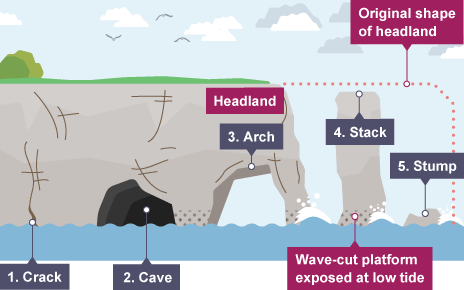Coastal landforms
1/11
There's no tags or description
Looks like no tags are added yet.
Name | Mastery | Learn | Test | Matching | Spaced |
|---|
No study sessions yet.
12 Terms
What is swash?
when a wave washes up onto a shoreline, transferring energy up the beach
What is backwash?
when a wave retreats back down the beach & into the sea, pulling away material
What is fetch?
the distance over when wind blows across the sea or a lake, generating waves
longer fetch = more powerful waves
What are constructive waves?
- waves that build up beaches due to their swash being stronger than their backwash
- the waves are low & have little energy
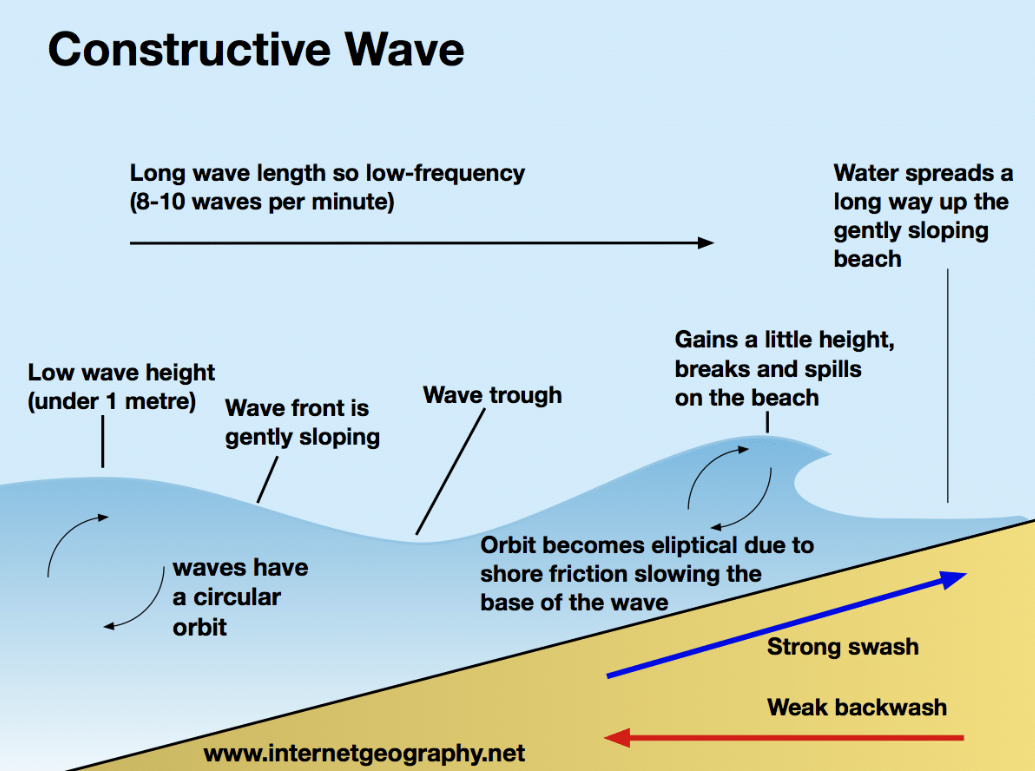
What are deconstructive waves?
- waves that destroy beaches due to their backwash being stronger than their swash
- the waves gain height as they approach the beach & have lots of energy
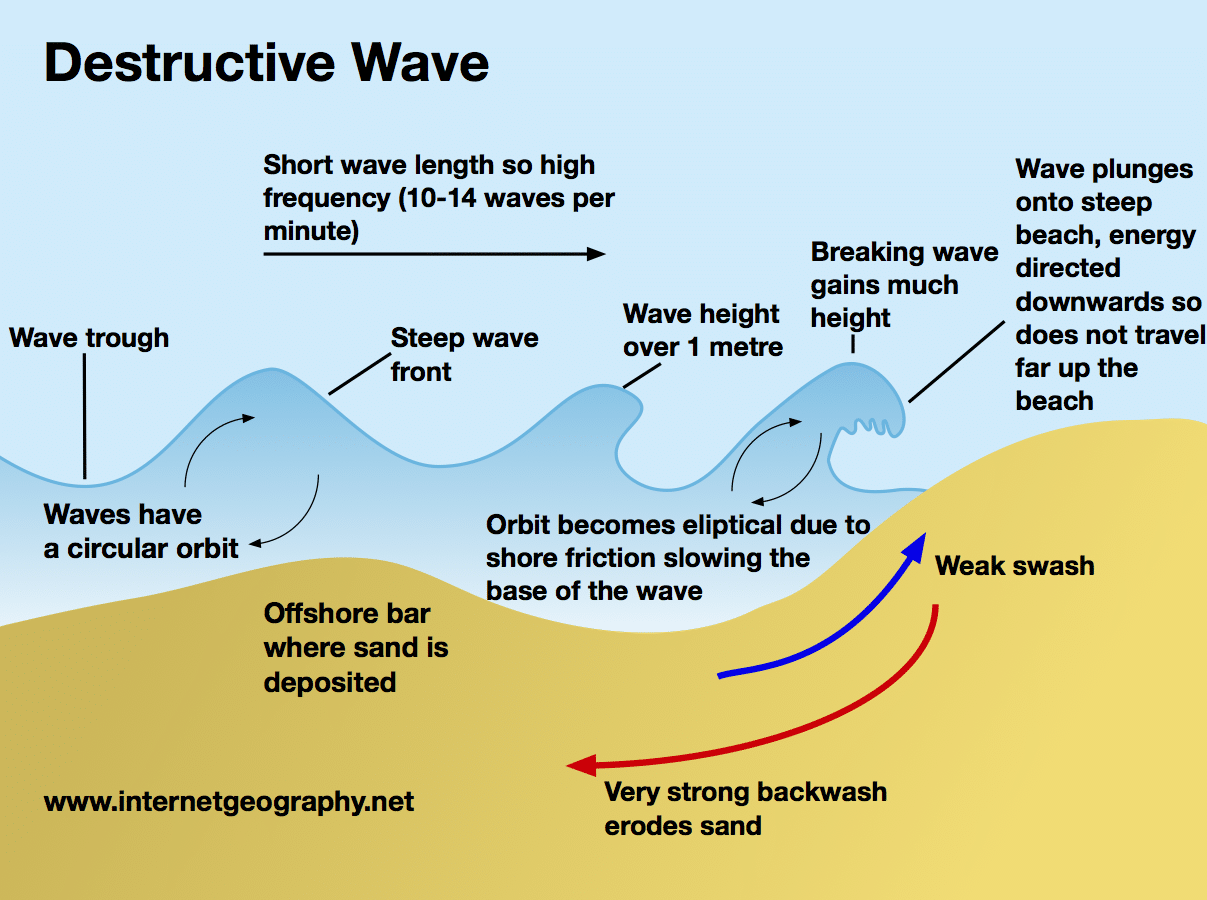
What is longshore drift?
- the process in which materials are transported along a coastline
- this happens in a zig-zag movement where swash carries sediment up the beach at an angle (dictated by the prevailing wind) & backwash carries sediment back down the beach 90° to the coastline
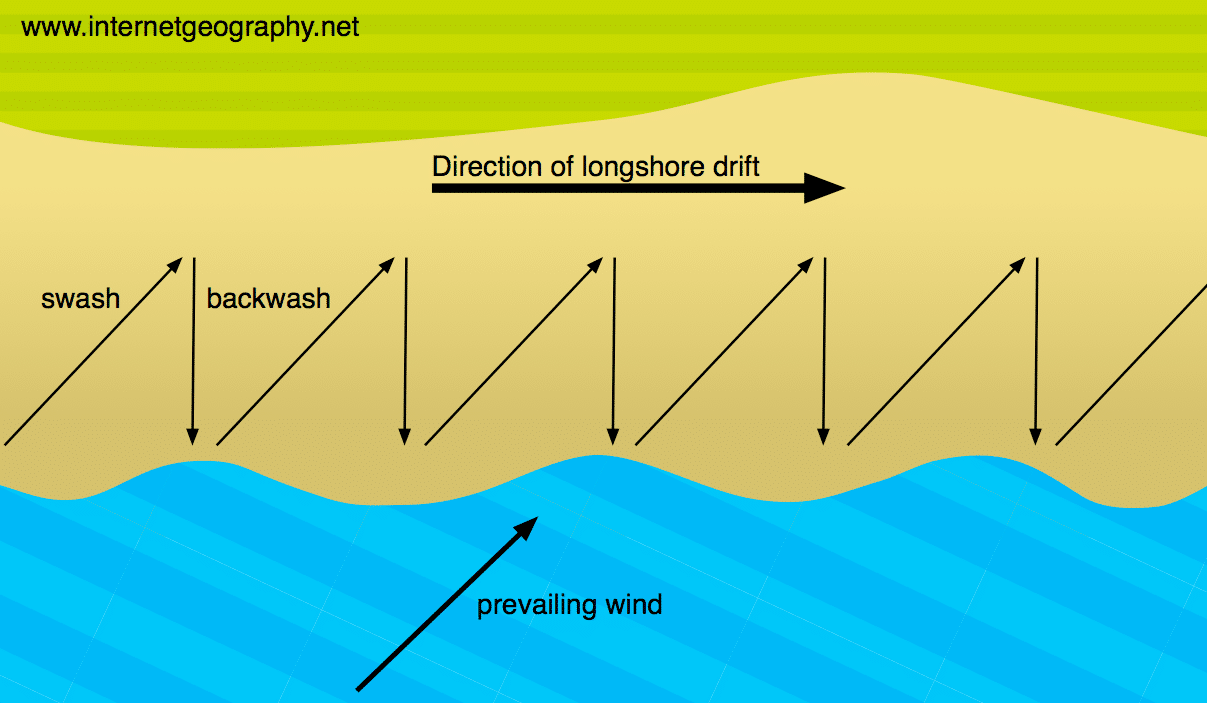
How are headlands & bays formed?
- coastlines consist of bands of soft rock & hard rock which are perpendicular to the sea
- because of differential erosion, the bands of soft rock erode much faster to forms bays & the hard rock is left sticking out as headlands
- overtime, the headlands will erode as well making the coastline straight again; then the process will start over
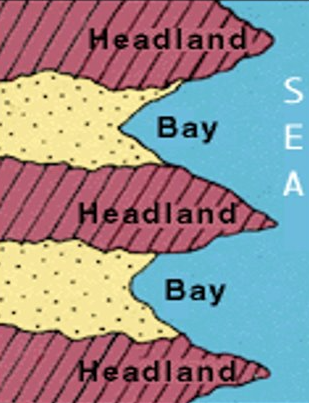
How are beaches formed?
- when waves lose energy & therefore deposit the material they are transporting
- there are 2 types of beaches → sandy & shingle
What are the differences between sandy beaches & shingle beaches
SANDY → wide, have a gently sloping beach profile, formed in low energy areas where constructive waves dominate (e.g. bays), often backed by sand dunes
SHINGLE → narrow, have a steeply sloping beach profile, formed in high energy areas where destructive waves dominate, often backed by cliffs
How are spits formed?
- sediment is carried by longshore drift along a coastline (by prevailing wind)
- when the sediment reaches the end of the coastline (usually a change in direction of a headland)
- with the condition that the swash is stronger than the backwash; that side of the headland is sheltered from strong winds
- Ultimately causing the sediment to build up above sea-level over time, forming a spit
- spits can develop a hooked end when the wind changes direction
- the area behind a spit is very sheltered so often salt marshes or mud flats will form due to the deposition of silt
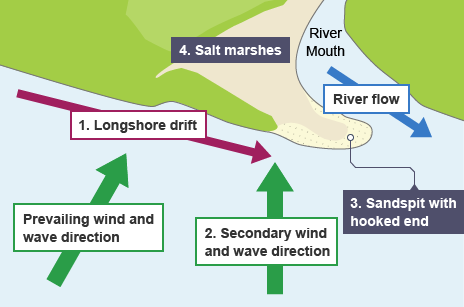
How are bars formed?
- when spits grow across a bay & join 2 headlands together, forming a bar
- shallow lakes can get trapped behind the bar - these are lagoons (lagoons do not last forever as they can get filled up with sediment)
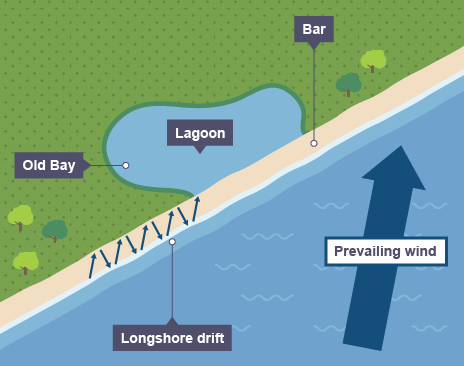
How are caves, arches, stacks & stumps formed?
- hydraulic action & abrasion erode headlands, creating cracks which gradually open up into a CAVE
- the cave becomes larger due to further erosion & eventually breaks through the headland to form an ARCH
- the base of the arch widens overtime until it is too unstable to hold the headland above it, causing it to collapse into the sea & leave behind a STACK
- waves attack the base of the stack, causing it to weaken & fall, leaving behind a STUMP
